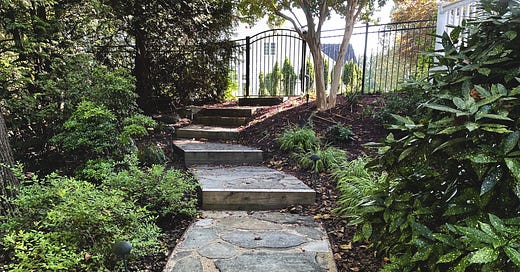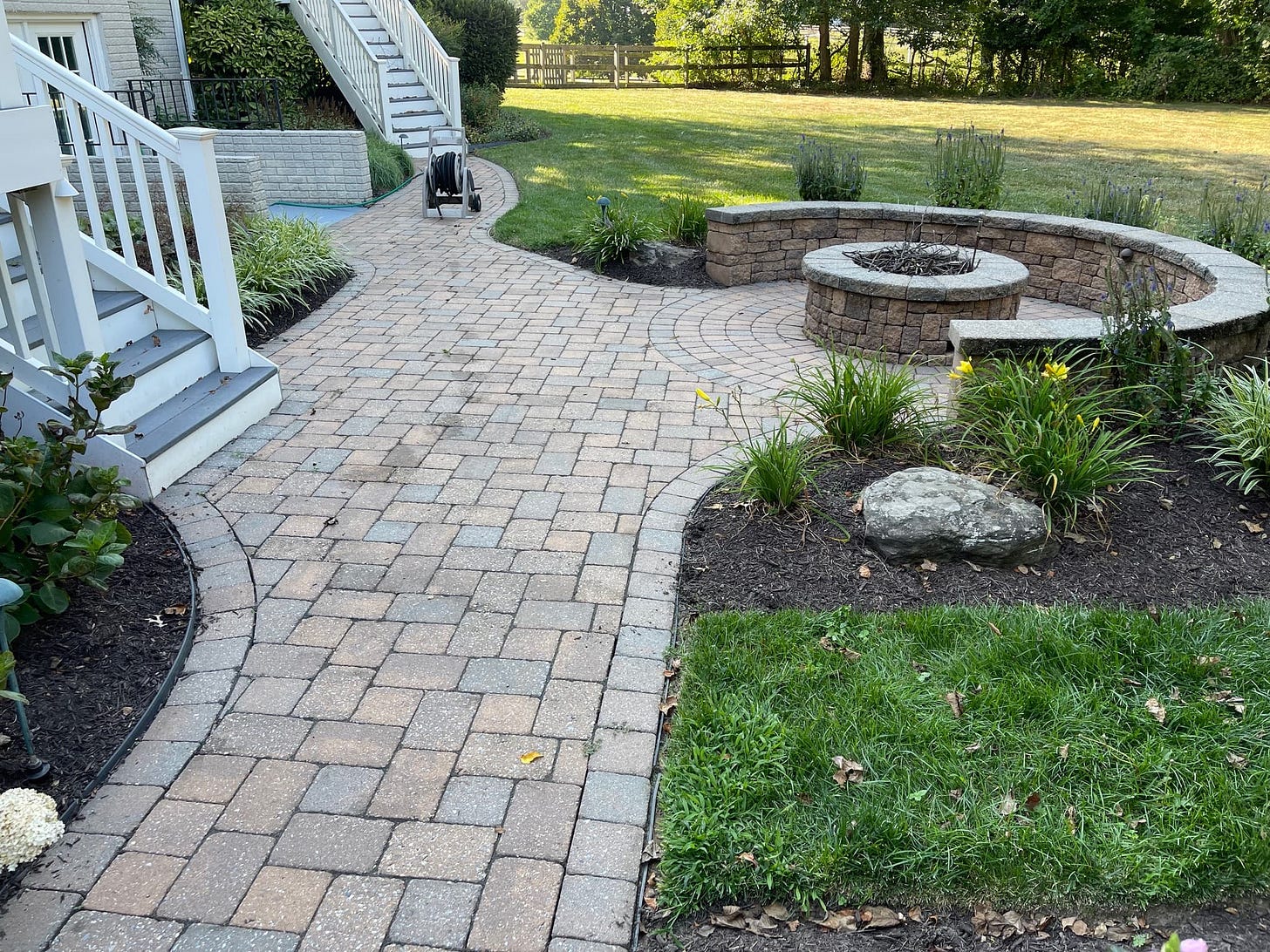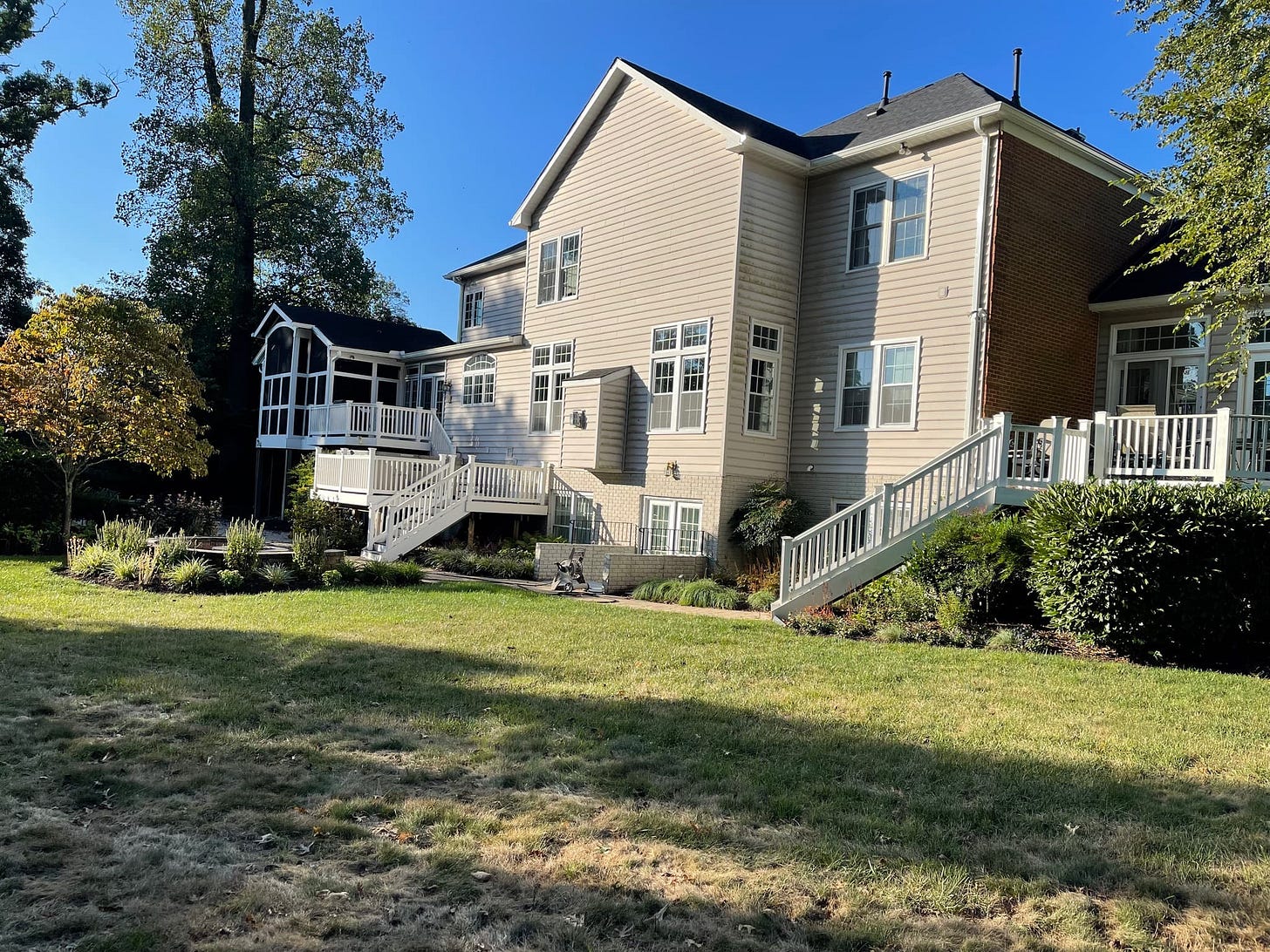Garden History
How I got tangled up with landscape designers, and the general character of the lot where I live.
JAMS Landscaping: 2006
I don’t recall much about the landscaping of my home when we bought it, but I assume it was basic builder-grade landscaping. I know it couldn’t have been great because we bought the house in 2004 and two years later decided we needed a full landscaping makeover. At the time, the landscaping of our property was entirely my wife’s domain. We agreed that we needed to retain a professional company to help us with our project. We ended up hiring JAMS Landscaping, in Annapolis, Maryland, to design and install the new landscape. For my own entertainment, I recently looked up the original proposal for the backyard as a reminder of the decisions we made seventeen years ago. At the time, I was deep into growing my business and had little to no idea what any of these plants were, why they might be appropriate, or what was involved with installing and maintaining this garden design. What I did know, deep in my heart, was that I was paying a professional landscape designer so I didn’t have to bother with it. And while I love pretty flowers, at the time (I hate to admit this) I thought I was the only chump in Howard County, Maryland, to pay a lot of money for a landscape and not get a pool.
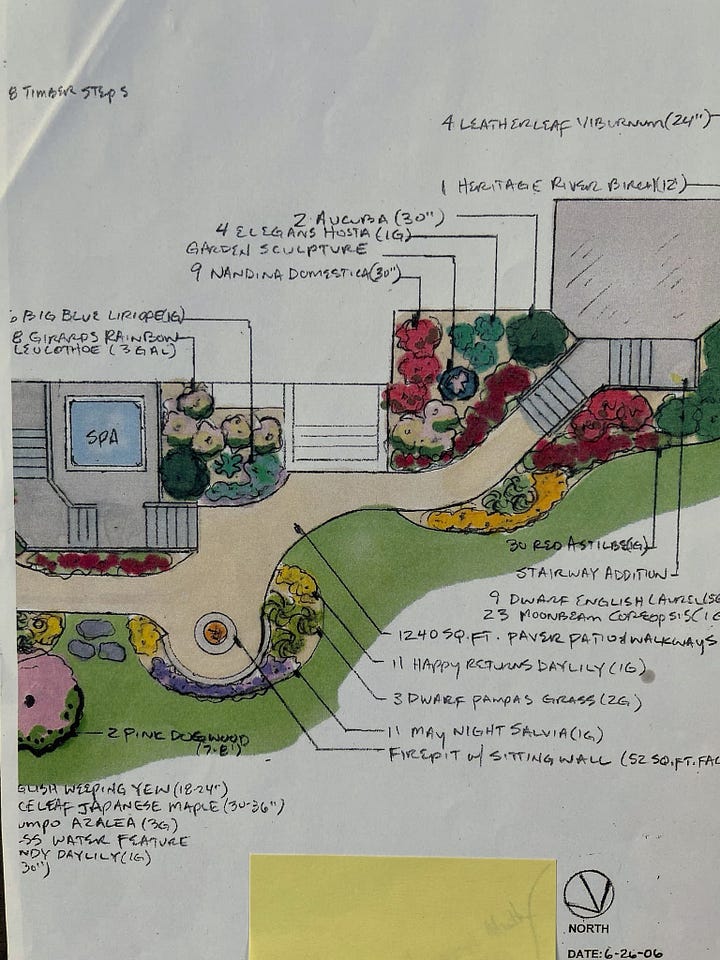
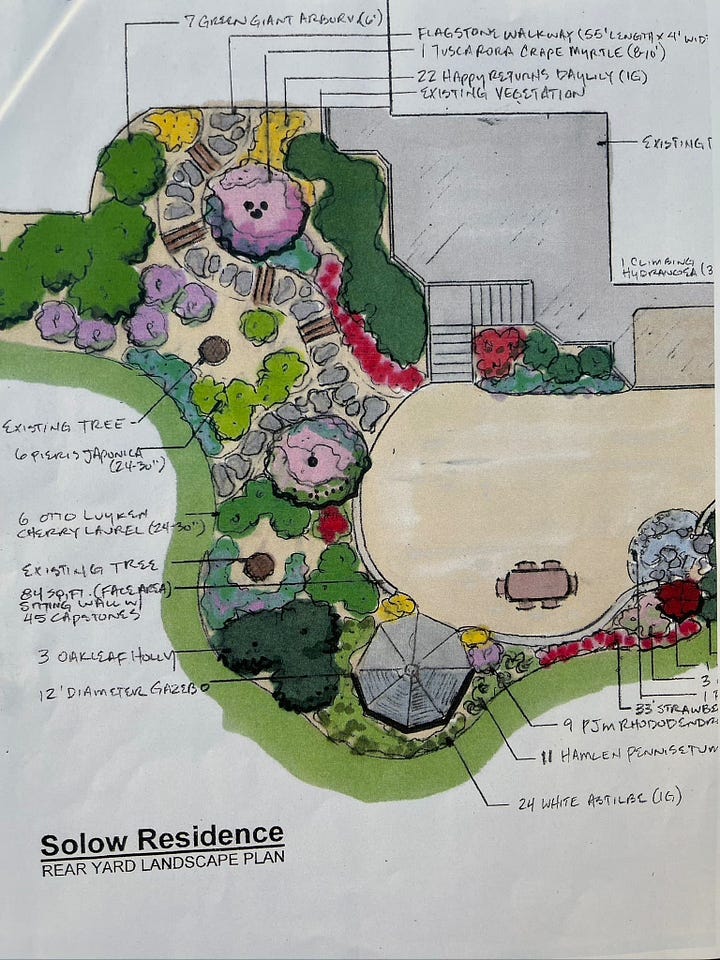
What I did get was more than two hundred plants and flowering shrubs in my backyard, along with a new deck extension and hot tub, a pondless water feature, a 12-foot- diameter gazebo, and 1240 square feet of EP Henry pavers. I’m embarrassed to admit that I never did any research on the plants and didn’t know the difference between a perennial and an annual. I certainly didn’t know anything about the installation and ongoing care for the plants that were recommended. Today I can only venture a semi-educated guess as to which plants made it to the final installation. At no time did I consider that all these plants might need to be tended and cared for if they were to thrive, and if I did contemplate that back in 2006, I guarantee I framed the question as, “How much would it cost to pay someone to do the gardening for me, so I won’t have to.”
The JAMS landscape design is still the backbone of the garden. It is full of gracefully curving pavers that outline natural beds for planting. There are different environments to plant, including a wonderful flagstone walkway from my driveway down to the back patio, a beautiful circular bed surrounding a large stone firepit, and several flowering trees and shrubs that give structure to the rest of the planting. Here are some of the basic characteristics of my house and lot that inform the JAMS landscape and garden.
My home is in Howard County, Maryland, in the Mid-Atlantic region of the U.S. It is in the revised hardiness zone 7b. This means that the lowest temperatures for my region range between 5 and 10°F, which sounds about right to me. Fortunately, your local nursery is unlikely to sell you plants that are not appropriate for your hardiness zone. Just Google your zip code’s hardiness zone and you can get the new information. (In my region, the average low temperature for the past 30 years was revised upwards a full 5 to 10 degrees. Apparently the earth is getting warmer, if you haven’t heard. Depending on your location, there may be a whole new world of plants for you to explore.)
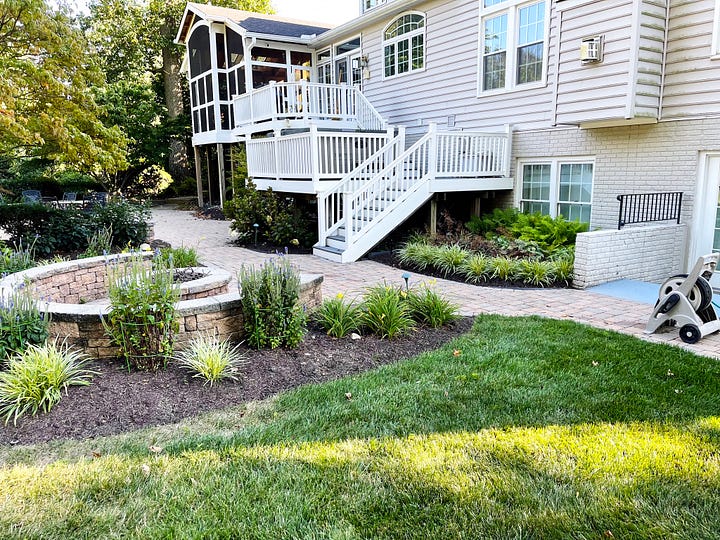
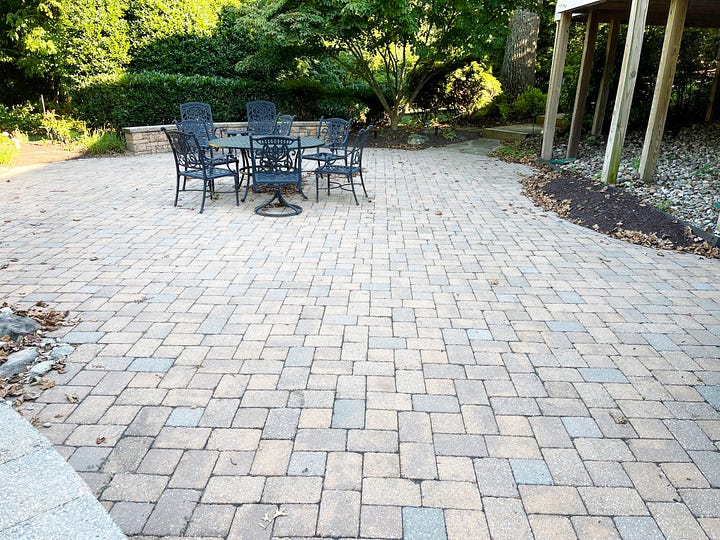
The front of my house faces south-southwest, which is great for growing beautiful, sun-loving plants. Unfortunately, the back of my house faces north-northeast, which isn’t so great for sun-loving plants. I get a good four hours of morning sun in most of my flower beds, ideal for shade/partial shade plants. I’ve heard that with the right mix of shade-loving perennials, shade gardens can burst with beautiful color. Maybe not mine…yet. But I’ve seen lots of pictures.
The soil in my back beds near the house is mostly clay, with a few stones, pebbles, and leftover pieces of wood and assorted building materials mixed in. The gods could have given me loamy soil -- a desirable mixture of sand, silt, and clay -- or sandy soil (you can guess) but I was blessed with lots of clay. The soil in the beds near the trees in my backyard is different. As you dig down into what I call my woodland garden beds, the soil becomes like dust, with almost no nutrients. Between the clay soil, which is no picnic when it comes to the care and maintenance of plants, and the dry dusty soil in my woodland beds, which is also challenging for growing plants, I have some excellent excuses for the variety of plants I’ve killed along the way.
The property is surrounded by trees, with two 100-foot-plus specimens: an oak that is situated in the middle of the yard and a poplar that is close to the house and the beds near the woods. The result is that beginning in August and ending sometime in November or December, there is an unbelievable storm of dead leaves, sticks, and tree branches that fall on the lawn and the flower beds; not great if you picture neatly mulched and tidy beds when you think of your perfect garden.
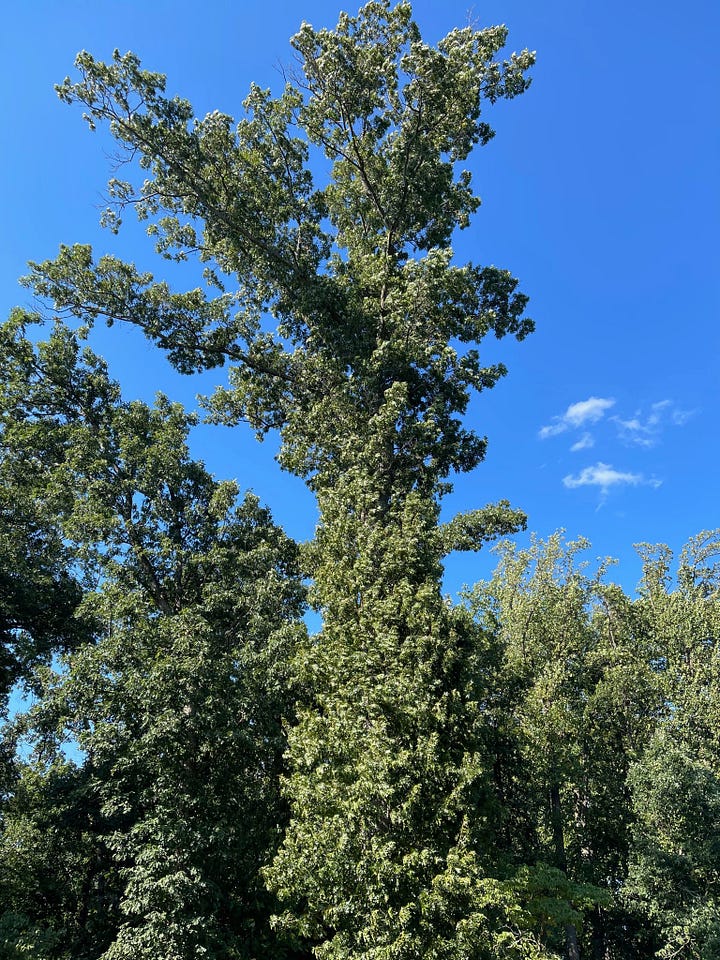
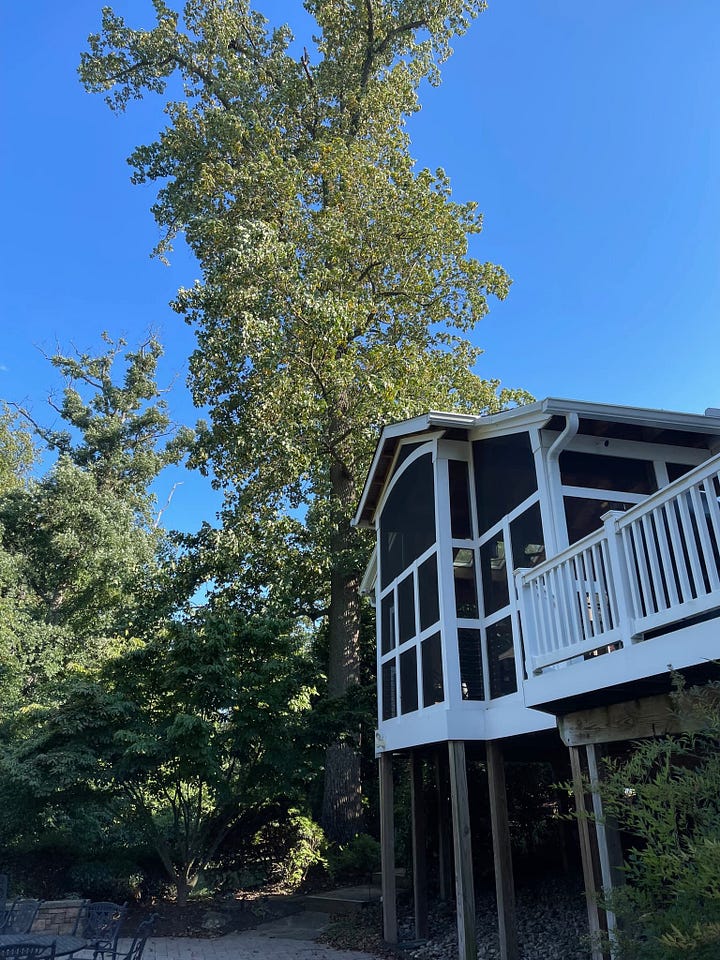
Trying to plant flowers under the trees is difficult because the trees apparently have first rights to all the water. We have pop-up sprinklers to irrigate our beds, and they run every third day through the summer starting sequentially at 3:30AM. I recently made a $28 investment in a digital meter that measures water, sunlight, and soil pH. My guess is I’ll shortly find out that I’m significantly underwatering my plants under the trees and overwatering plants in the beds closer to my house with more organic soil. But that’s just a guess.
My lot backs up to an open space with dense woods across the back of our property. If you are planning a new garden, you should consider (at least here in the Mid-Atlantic region) the large amount of deer traffic that will migrate across your yard to get to the woods. And there is nothing, NOTHING, that is more discouraging than planting a beautiful new specimen and having deer turn your prized new plant into a midnight snack. Of course, the woods are home to more than just deer. We routinely have issues with groundhogs, moles, squirrels, birds, and…wait for it…snapping turtles. I’ll tell you the turtle story in a different post.
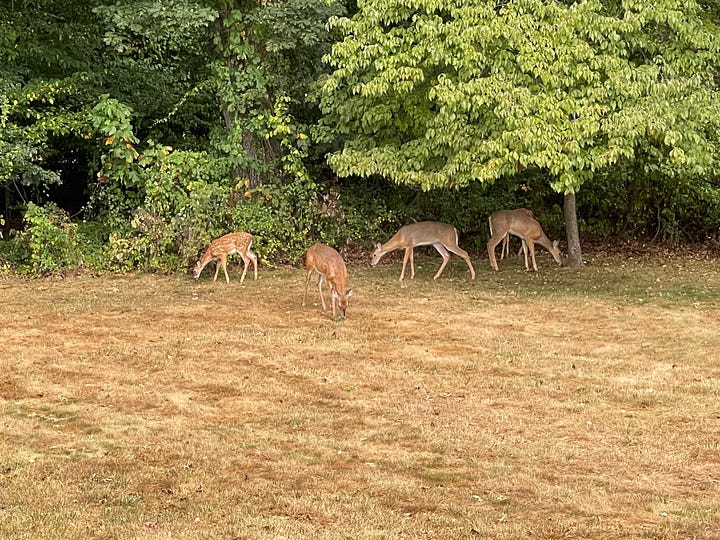
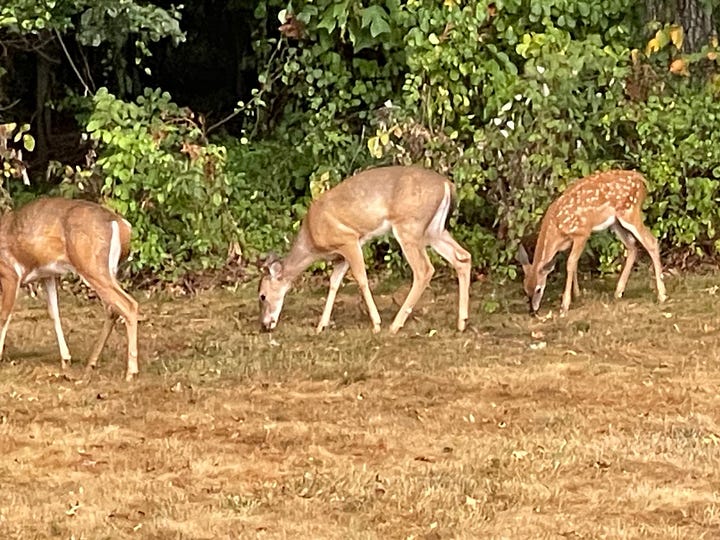
Sun Nurseries: 2022
My post-retirement garden is basically the same as the 2006 version. The difference is that many of the plants have been replaced in the new design. The hardscape, pavers, waterfall, and many of the shrubs and trees are all still in place, although they are now mature and bigger than I could have imagined when we first did the plan (that is, if I had spent any time imagining how this would look when we first did the plan).
When I retired in 2022, I retained the services of Sun Nurseries, a well-known local nursery in Howard County. Below is the landscape design by Sasha, a landscape designer from Sun Nurseries. I’ve made several changes to the garden since we installed this design, either because the original plants died, the proposed plants died, there were changes to the hardscape, or because I came up with what I thought were better ideas.
This drawing is to scale and helps you get a feel for how the plants and the hardscape work together to form the bones of a beautiful garden. I know that when I saw these plans, and approved the proposal, I thought, “What could possibly go wrong?” Unfortunately, I found out that when it comes to more than 100 new perennial plants fresh from the nursery, the answer is, “plenty.”
I can’t wait to give you a tour of the garden. You’re invited to join me on what I call Morning Patrol, and we’ll take a close look at the plants in each bed. But before we head out, I hear there is an opportunity for you to attend one of the highlights of the gardening year, the Golden Garden Awards. Tickets have been sold out for months, but my subscribers get to attend for free. I’ve saved you some of the best seats in the house. So, my next post will take you to this awesome event, and then we will get started on our tour. I’ll see you on the red...er...green carpet.

